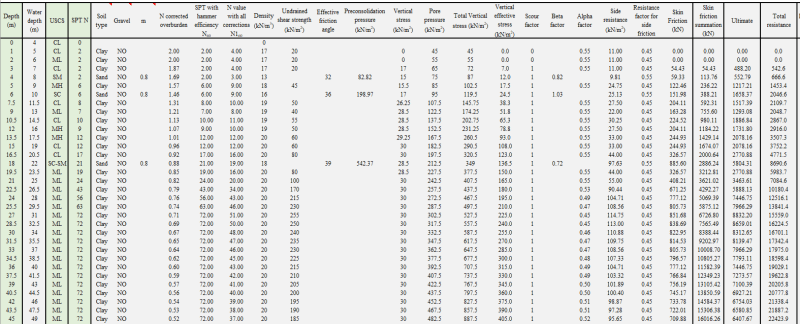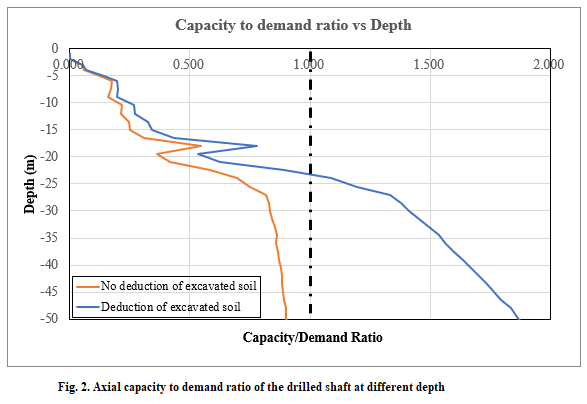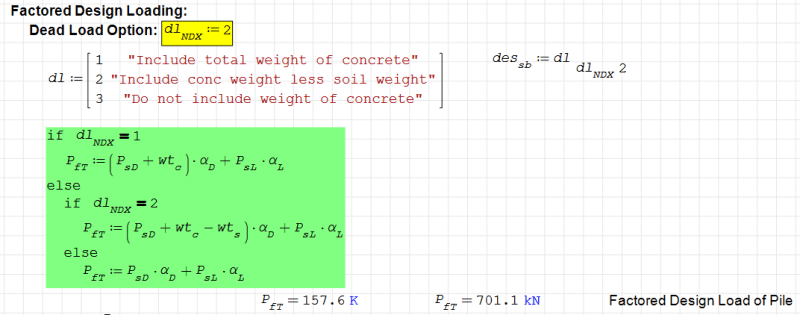Hi everyone,
I'm currently in the process of estimating the axial capacity of a single drilled shaft. I've come across a situation where the bearing resistance of the drilled shaft is insufficient to counter the imposed load, regardless of the penetration depth. This was due to the contribution of the weight of the drilled shaft. I can potentially achieve the required resistance by reducing the weight of the displaced volume of soil, . However I have no idea whether reduction of the displaced soil weight is allowable or the equation used to estimate the axial resistance of drilled shaft implicitly takes into account of such displaced soil.
If any of you have insights regarding the inclusion or exclusion of the displaced volume of soil, I would greatly appreciate your input.
Thank you in advance.
I'm currently in the process of estimating the axial capacity of a single drilled shaft. I've come across a situation where the bearing resistance of the drilled shaft is insufficient to counter the imposed load, regardless of the penetration depth. This was due to the contribution of the weight of the drilled shaft. I can potentially achieve the required resistance by reducing the weight of the displaced volume of soil, . However I have no idea whether reduction of the displaced soil weight is allowable or the equation used to estimate the axial resistance of drilled shaft implicitly takes into account of such displaced soil.
If any of you have insights regarding the inclusion or exclusion of the displaced volume of soil, I would greatly appreciate your input.
Thank you in advance.



